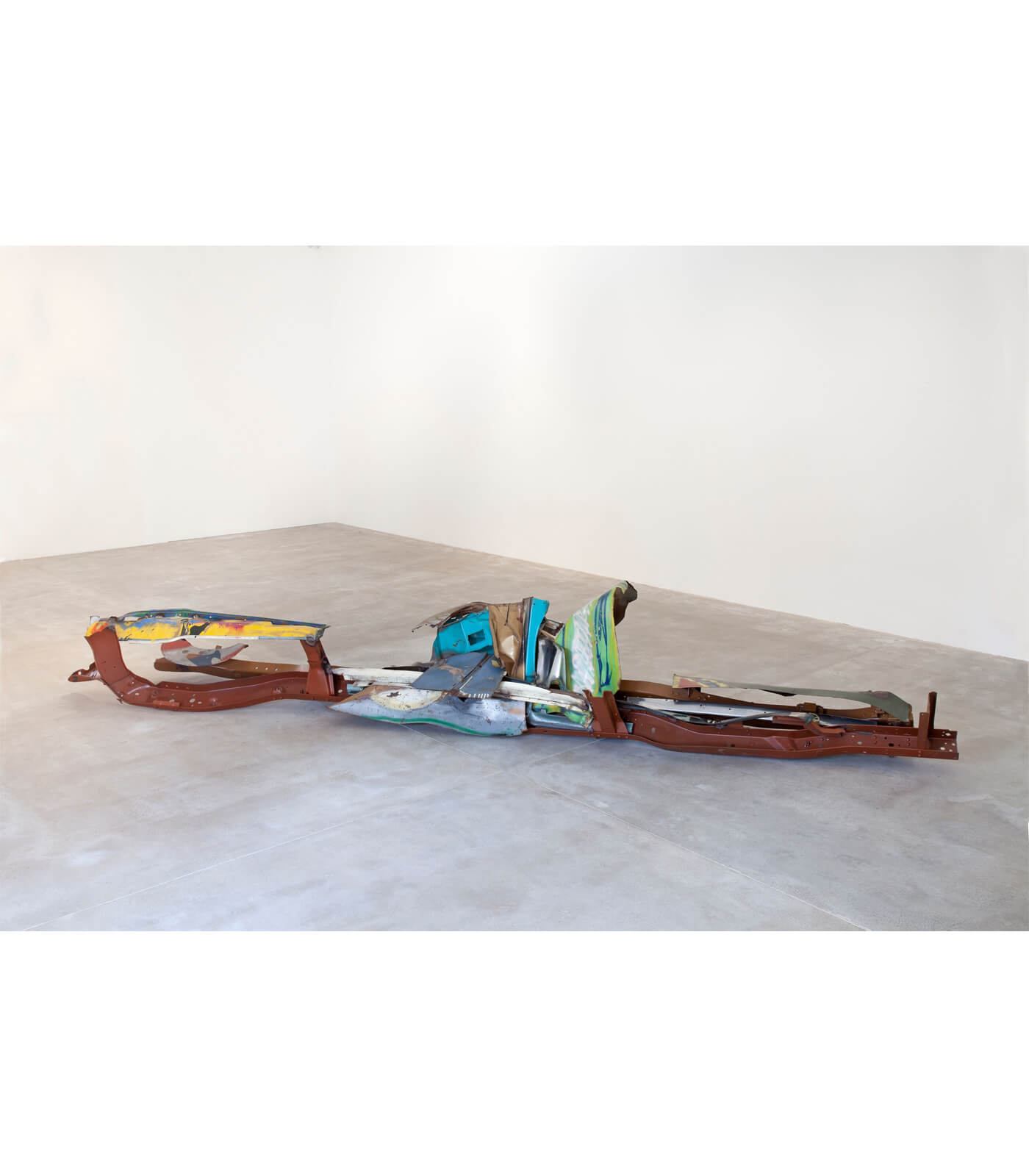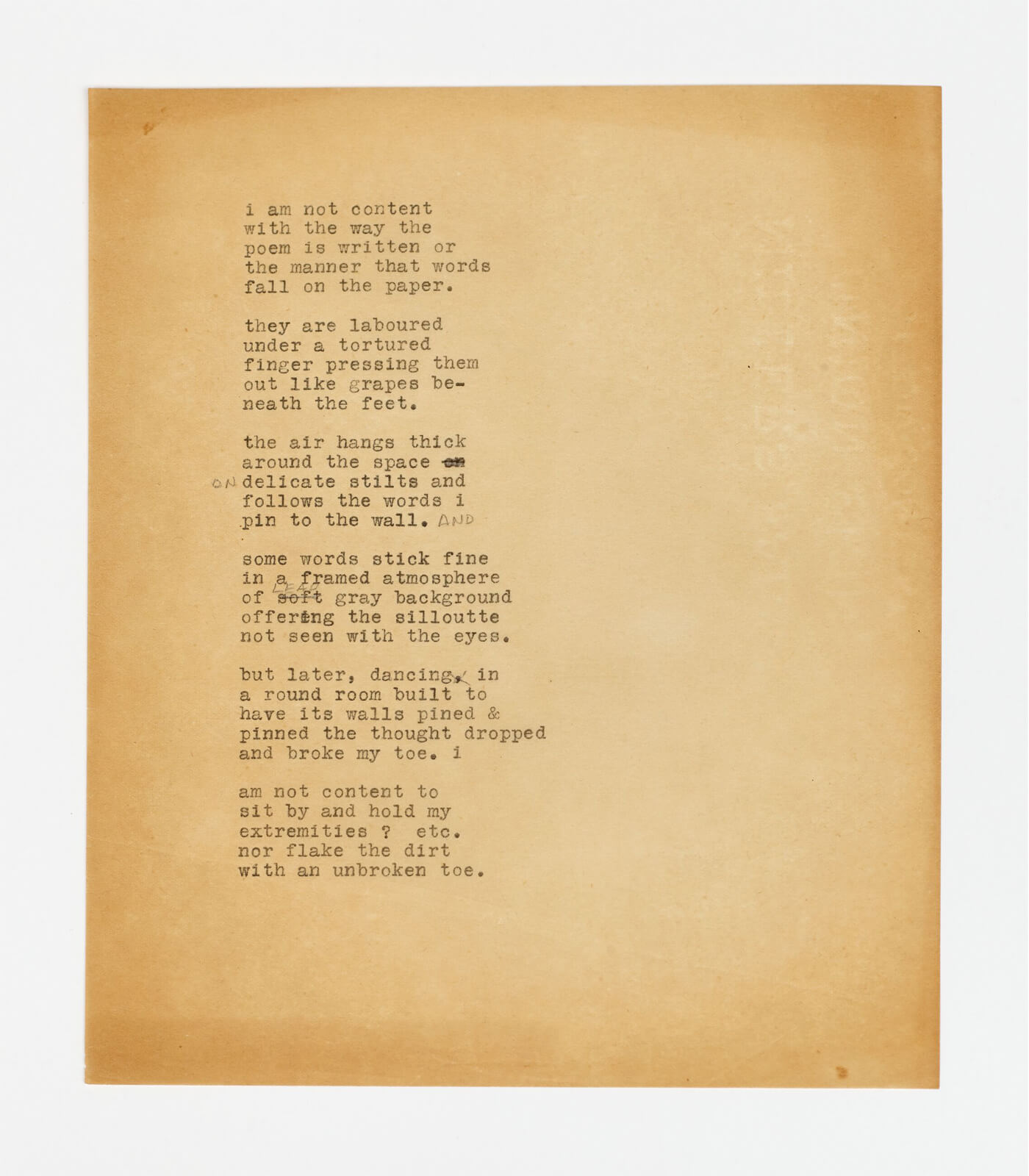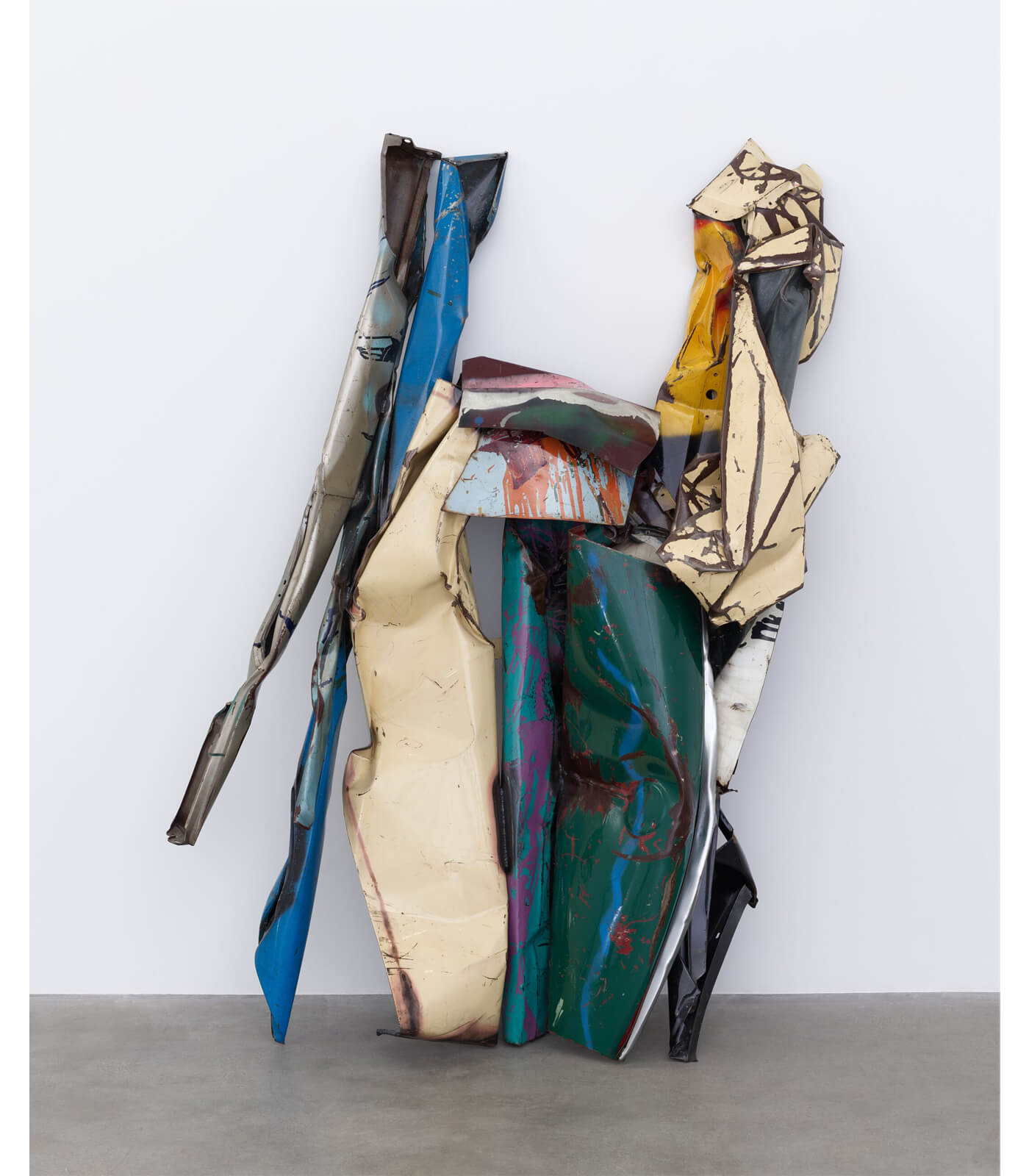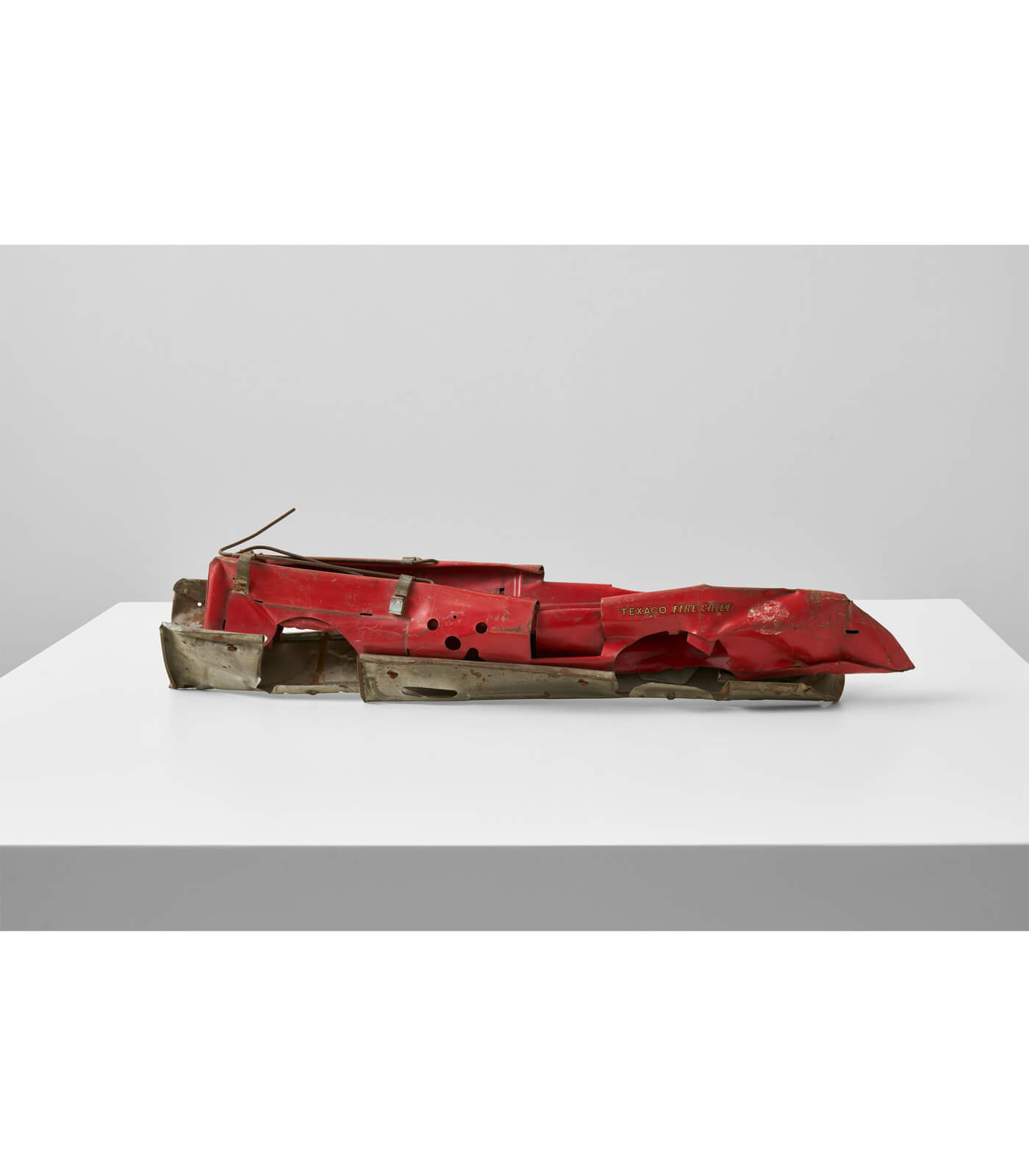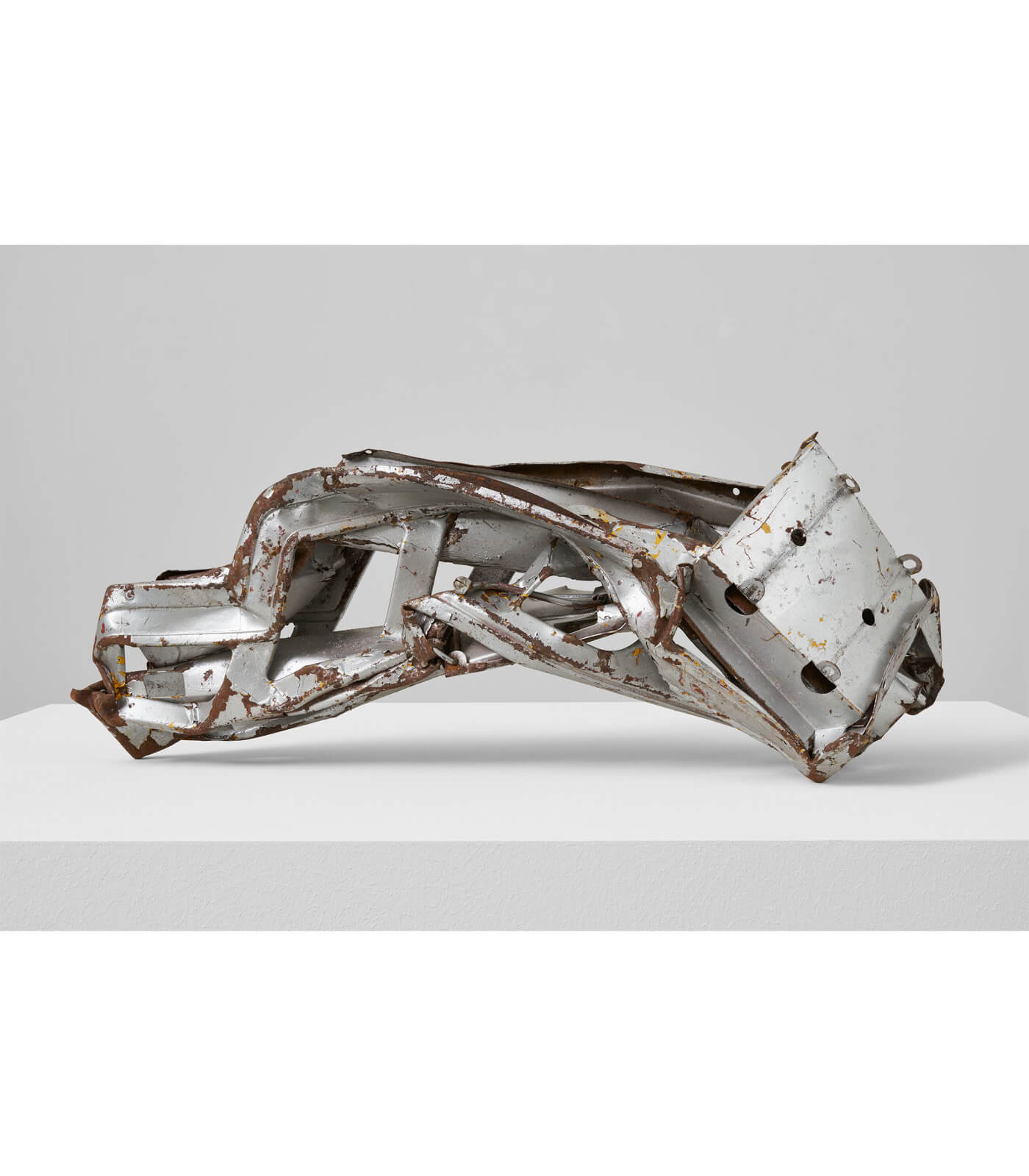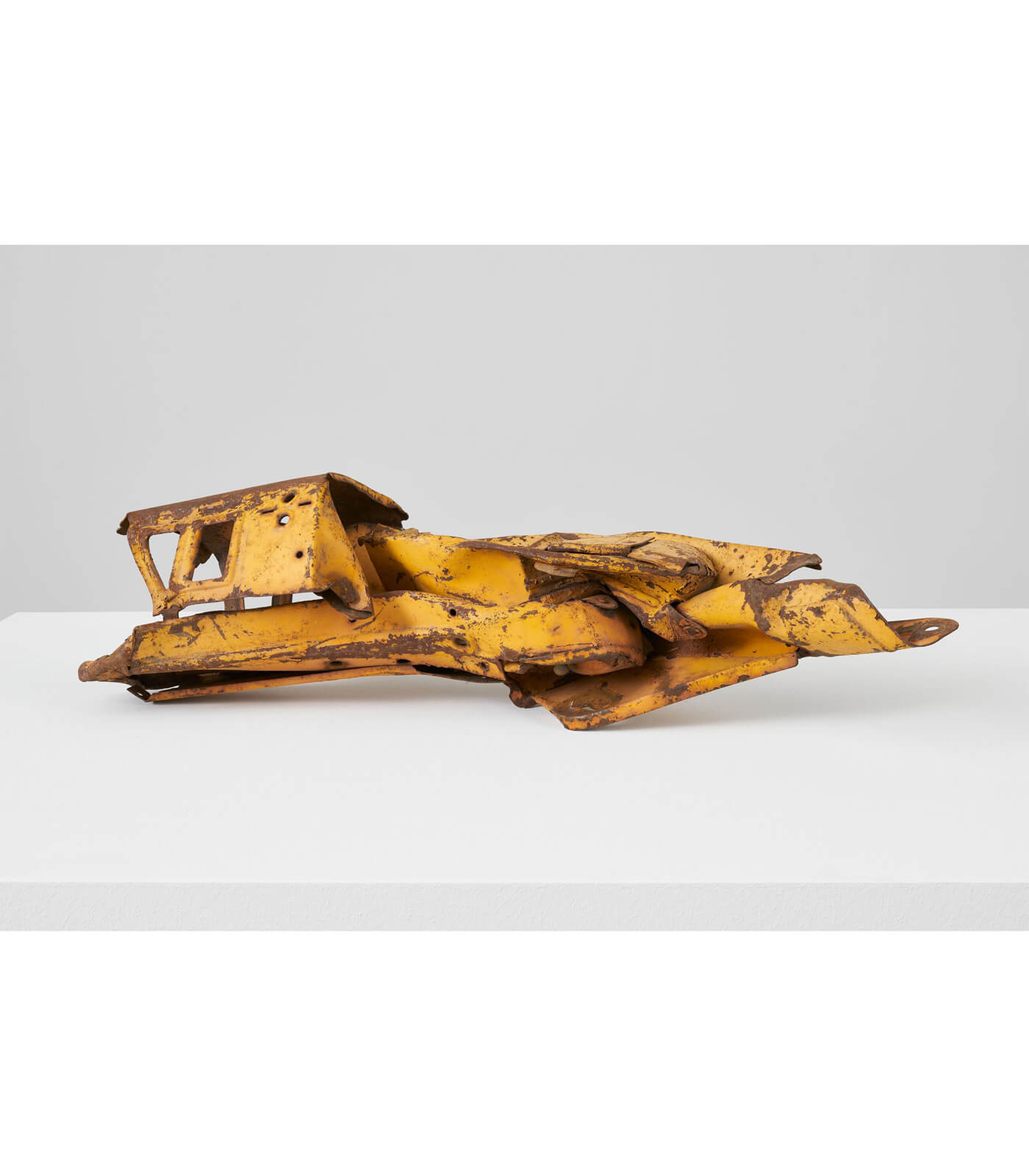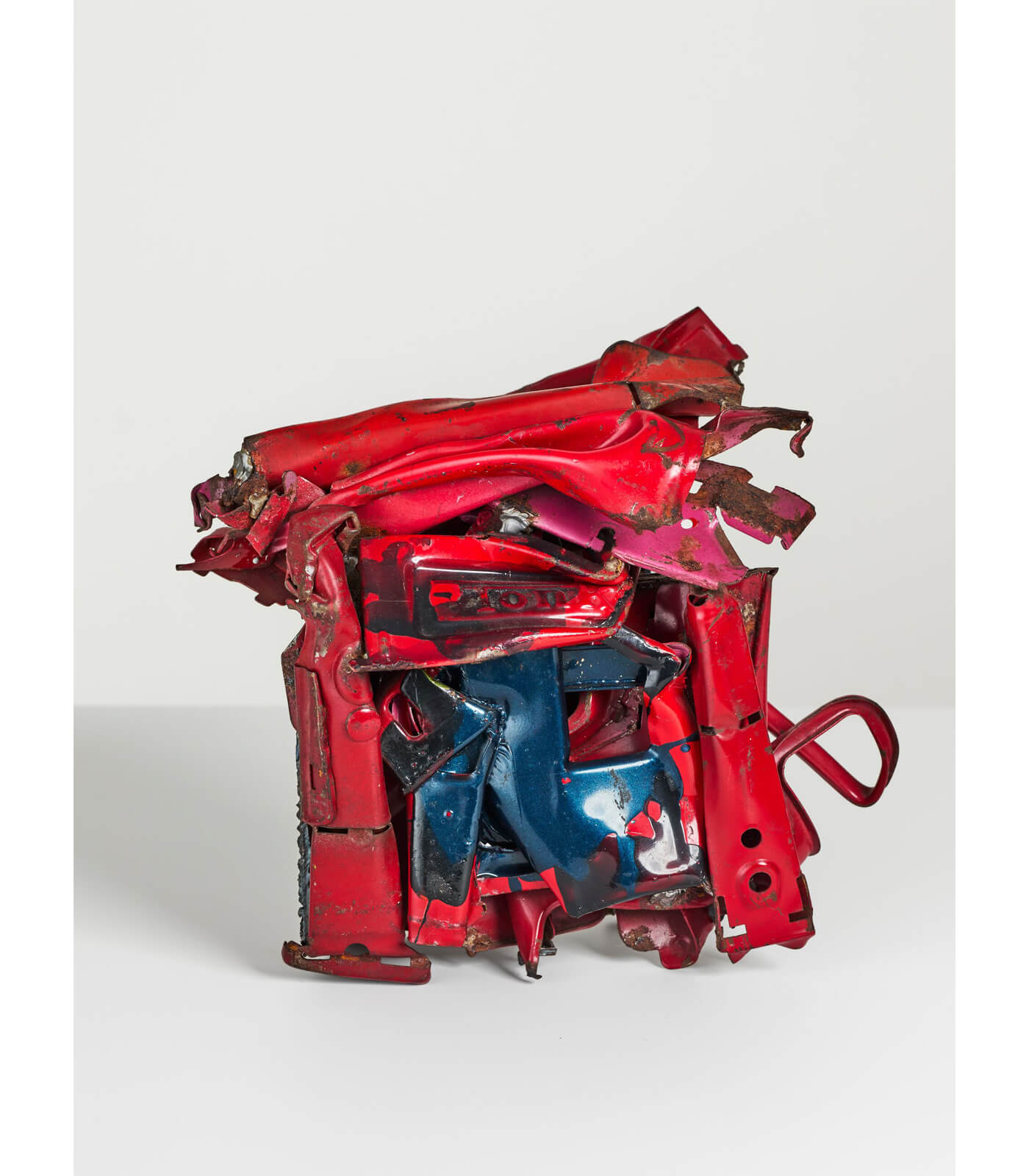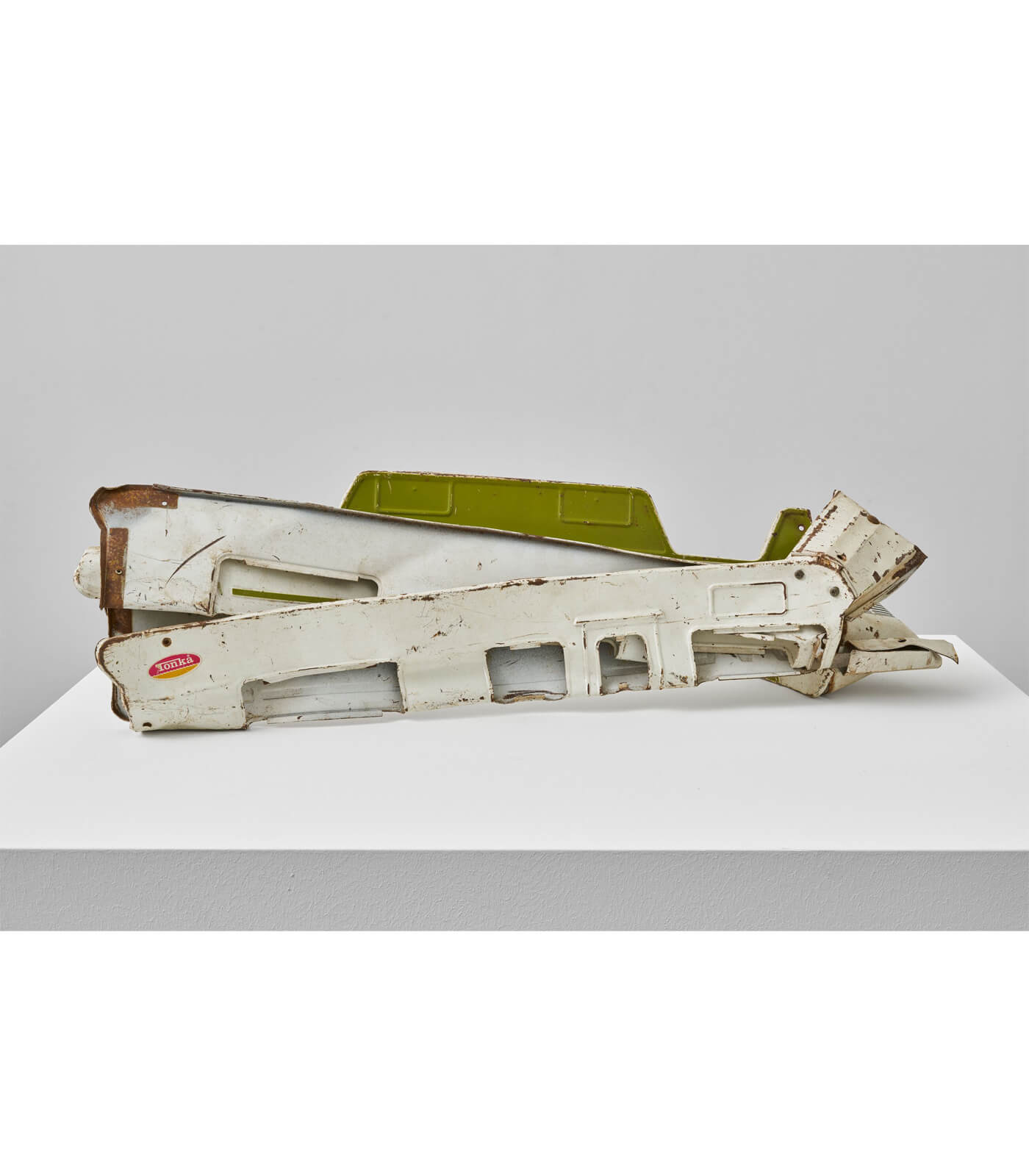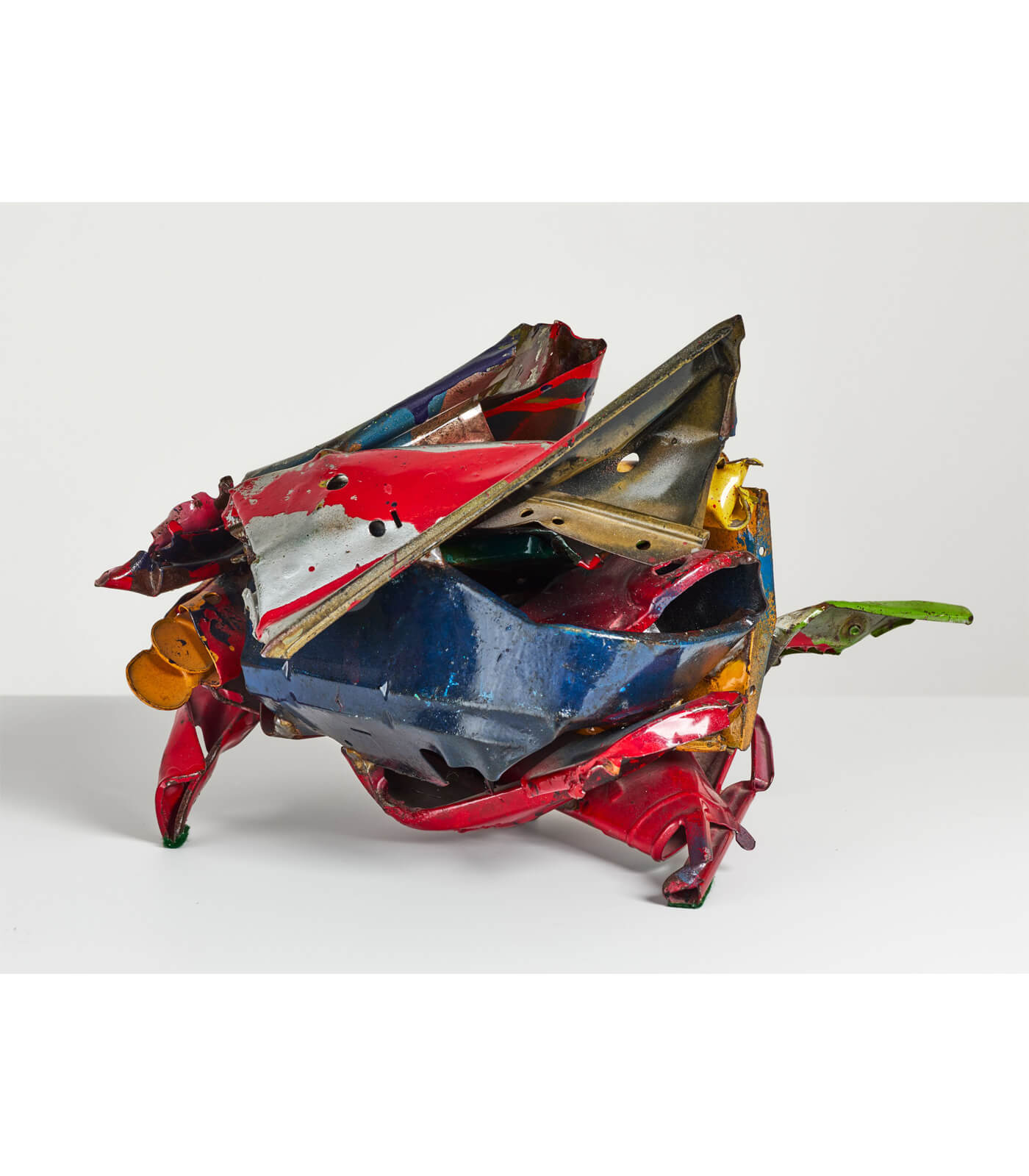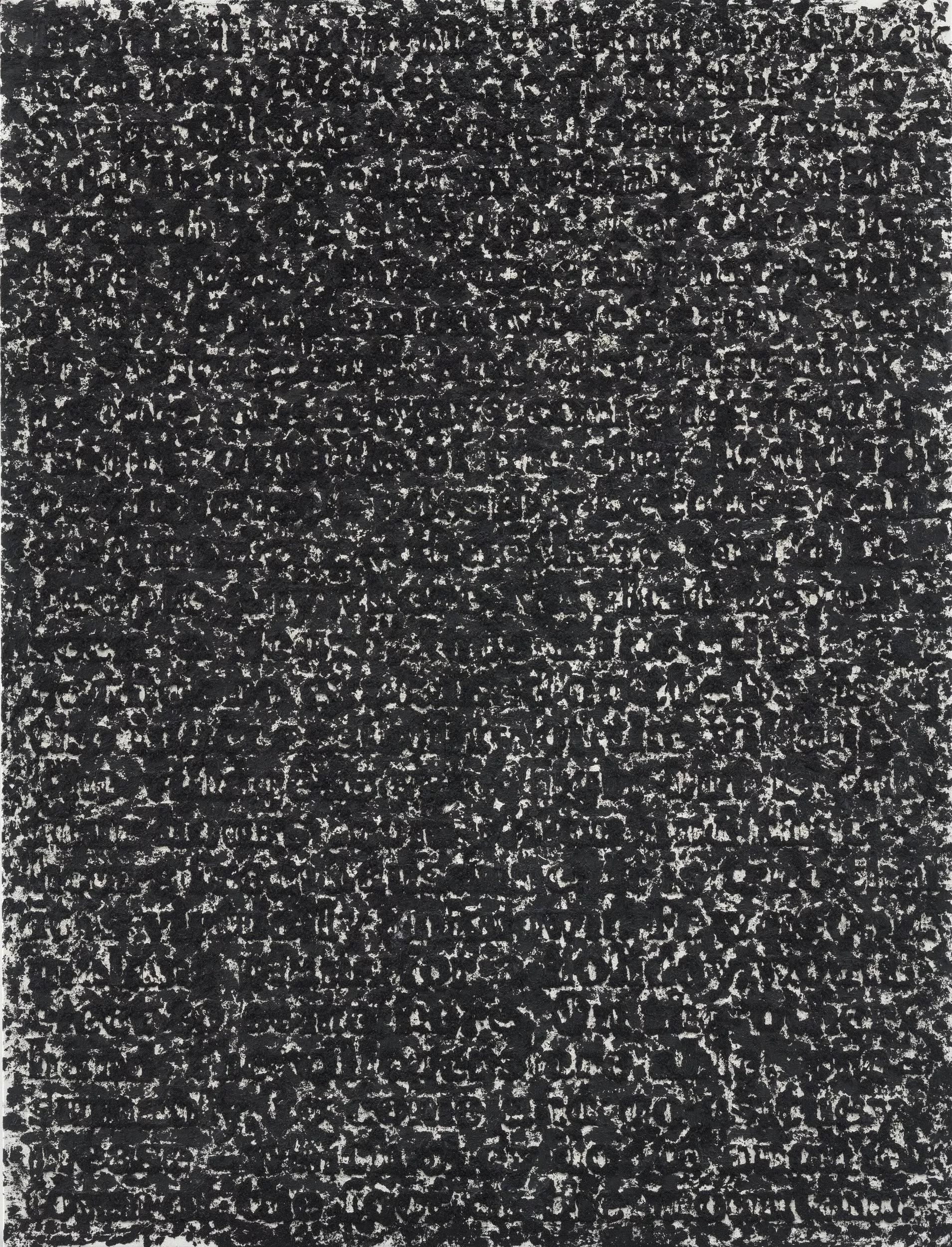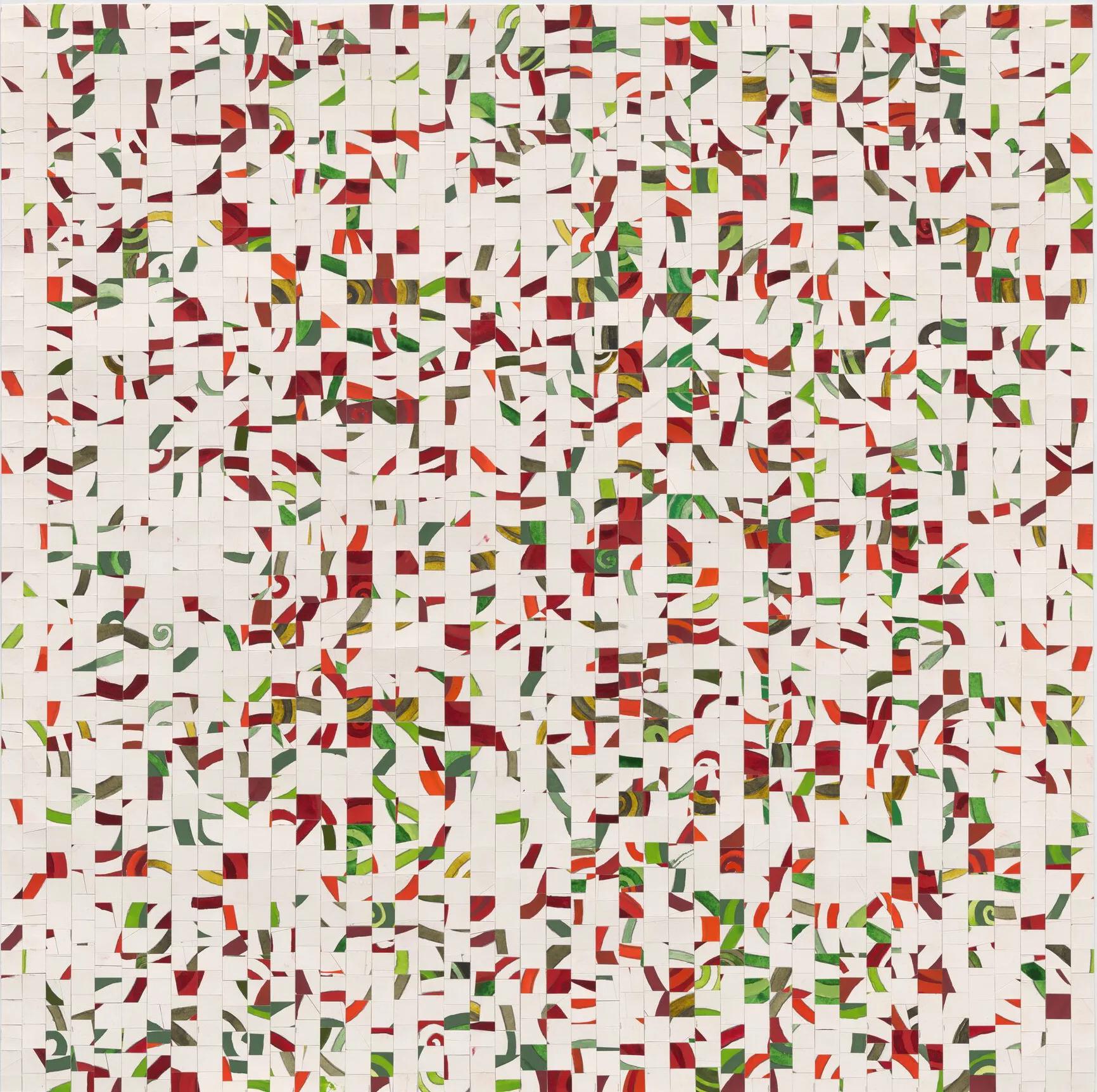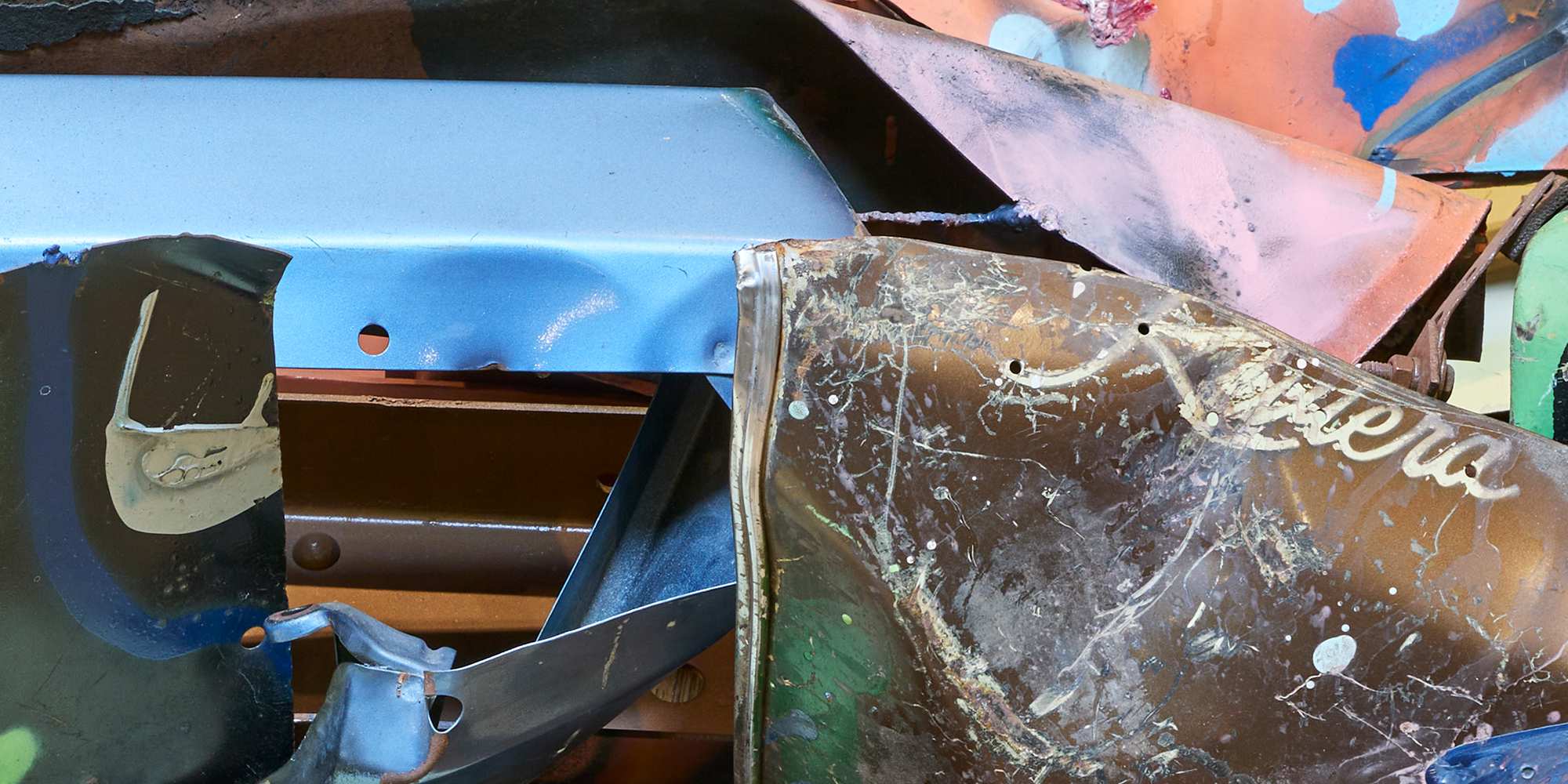
John Chamberlain
The Poetics of Scale
10 May – 2 September 2023
Monaco
This exhibition pairs John Chamberlain’s early poetry from his year at Black Mountain College with his Gondolas and Tonks from the 1980s, epitomizing the artist’s poetic approach to language, materials and scale.
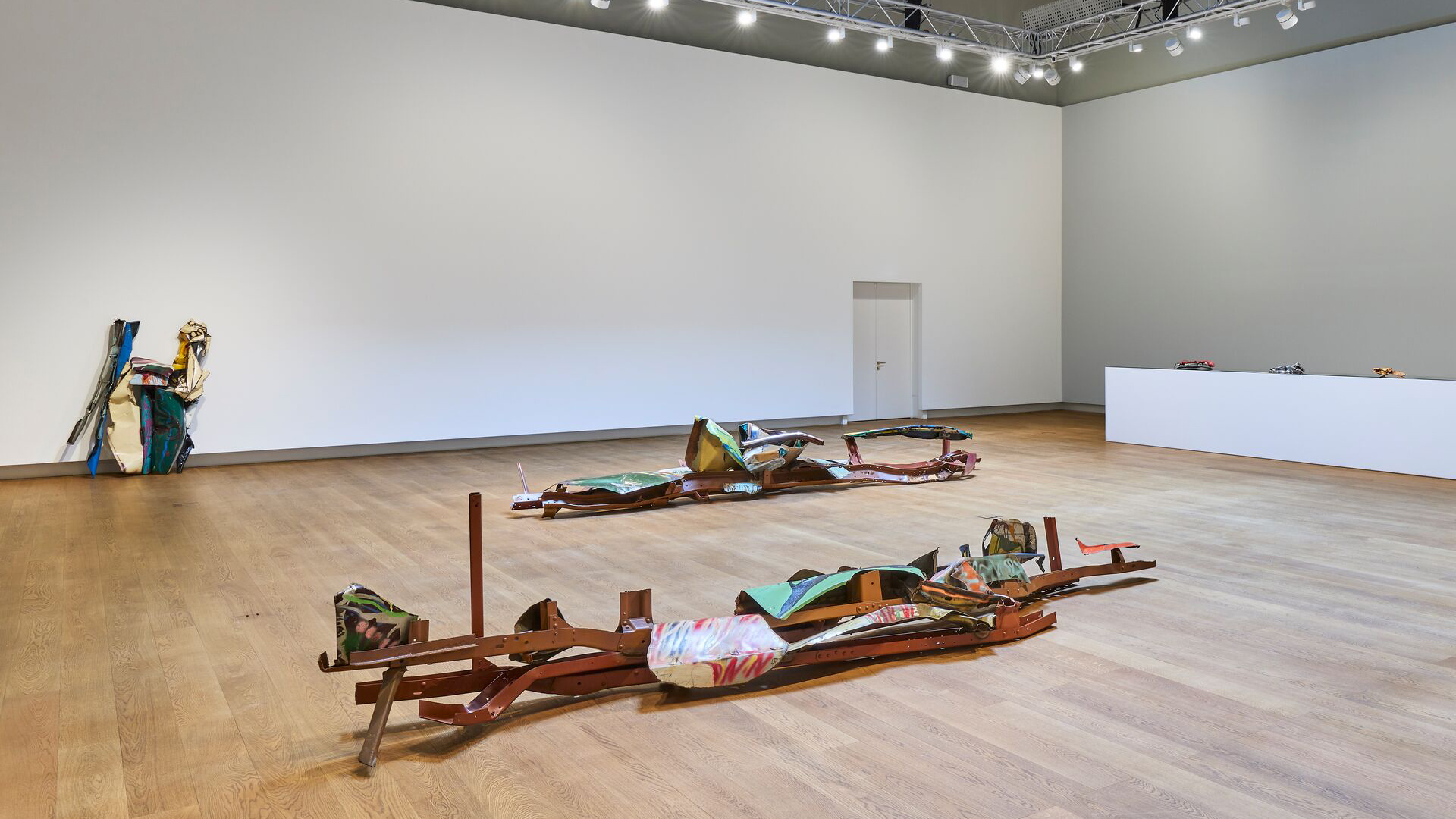
Hauser & Wirth Monaco’s exhibition will be the first time Chamberlain’s poetry will be shown publicly, illuminating a sensitive and little-known aspect of his practice produced at Black Mountain College in the 1950s. This interlude had a profound impact on the artist—he would later state, ‘My teachers were Kline, de Kooning, Charles Olson.’ Chamberlain would later become known for the creativity and poetry of his titles, which, like his sculptures, were assembled based on ‘fit’. He wrote words on cards, trying different combinations to create beautiful compositions.
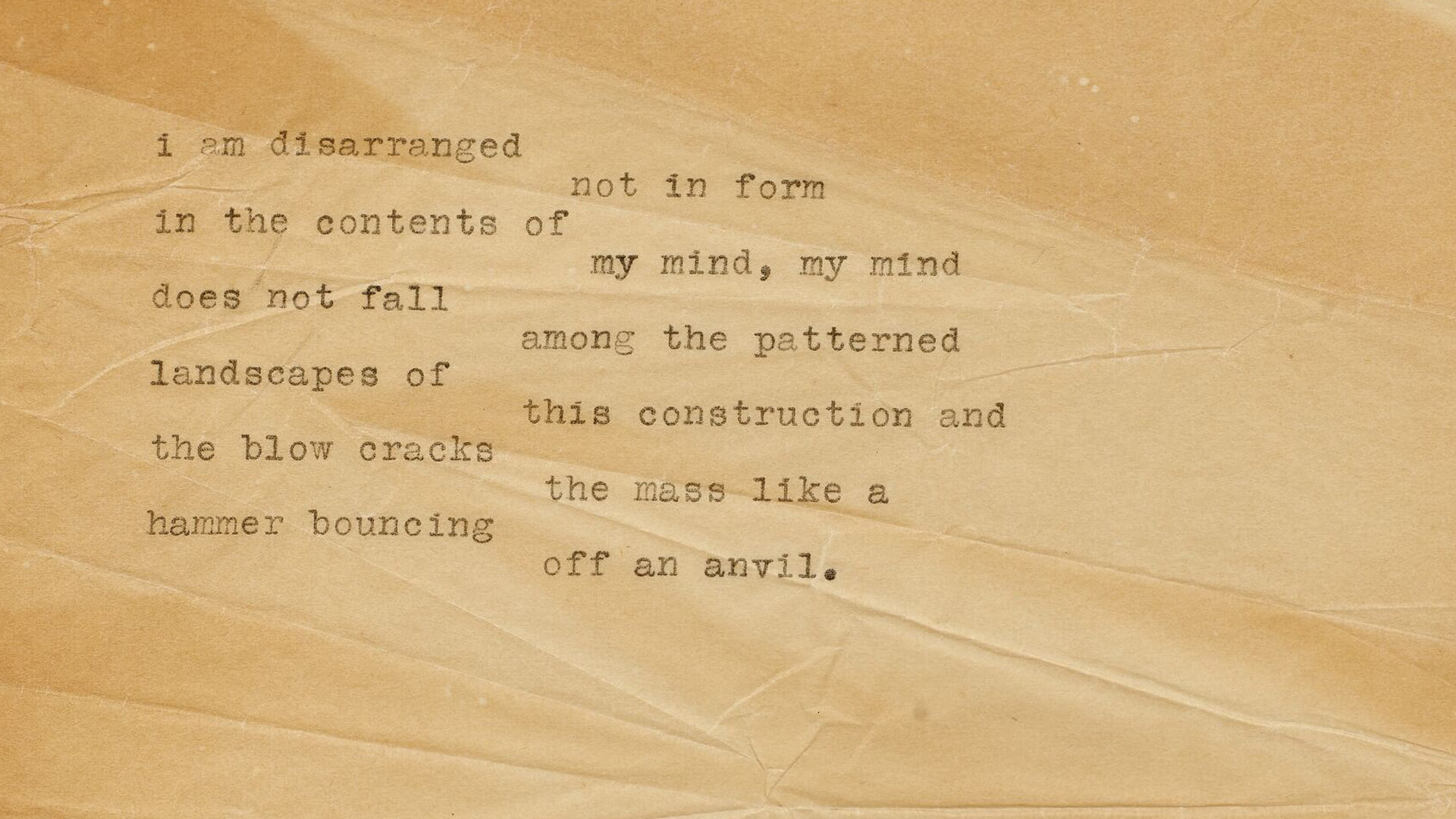
In the early 1980s, he gifted his poems from Black Mountain College to the curator and author Julie Sylvester, who was in the process of conducting interviews for a catalogue raisonné of Chamberlain’s works. He had saved them for nearly 30 years, and she recognized in this a sign of their singular importance for him, and the insights they might afford for his work. The pages reveal his working through the images and themes, as well as his and others’ changes and annotations.
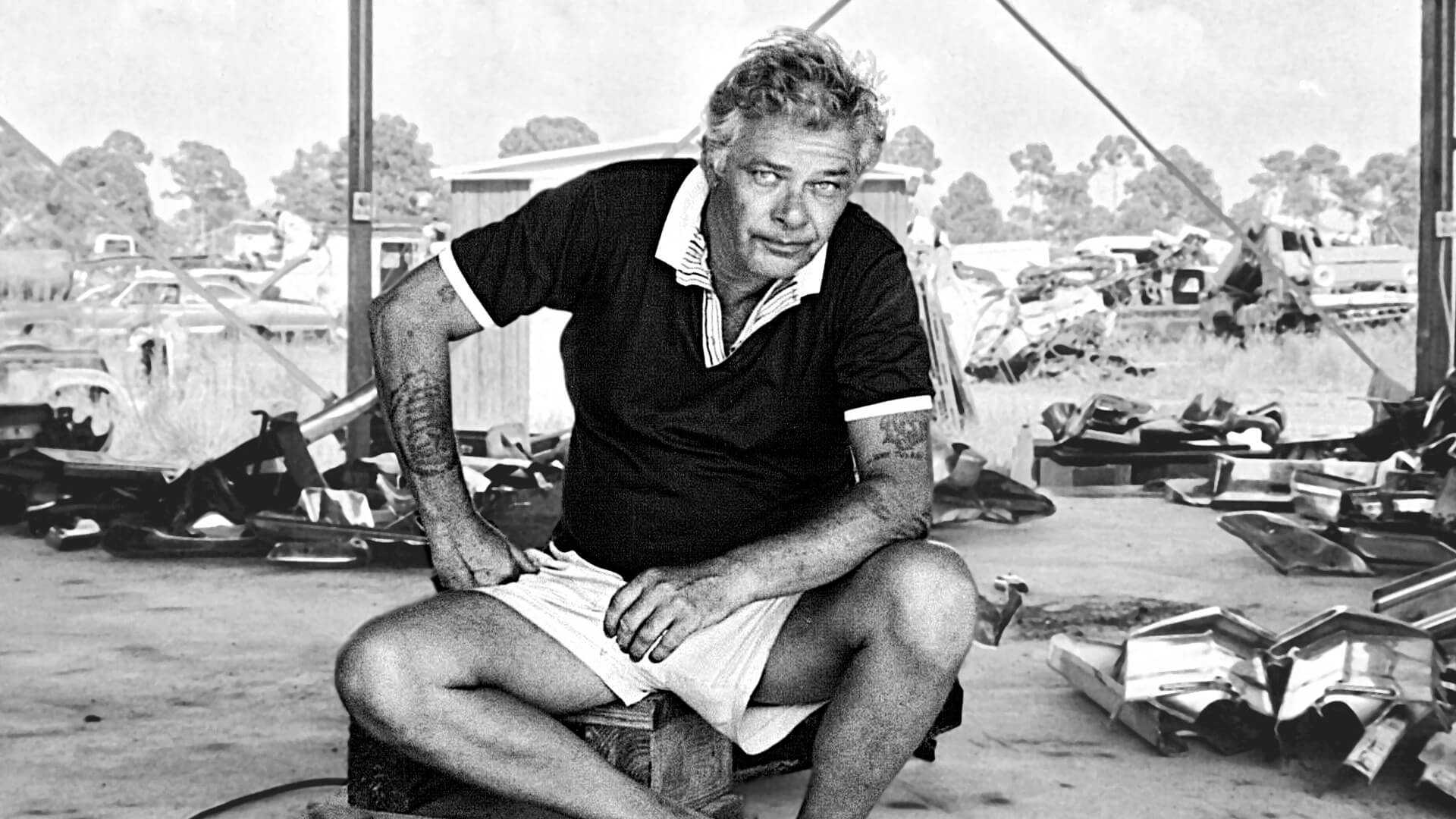
In 1980, Chamberlain had moved to Sarasota, mooring his boat, the Cocola, at a local marina. He established an outdoor studio at the back of a junkyard in Osprey, eventually occupying a large former industrial building painted bright yellow, allowing him to make work larger than ever before. The artist soon began work on a monumental sculpture commission, ‘Deliquescence,’ made from truck parts. Seeing the remaining truck chassis nestled together in his studio, he was reminded of a fleet of Venetian gondolas and probably also inspired by the proximity of the sea, the vessels in the marina and along the coastline. These hefty parts became the basis of the Armada series. In 1984, Chamberlain changed the series title to the Gondolas, naming each after a notable poet—including Charles Olson, his teacher at Black Mountain College.
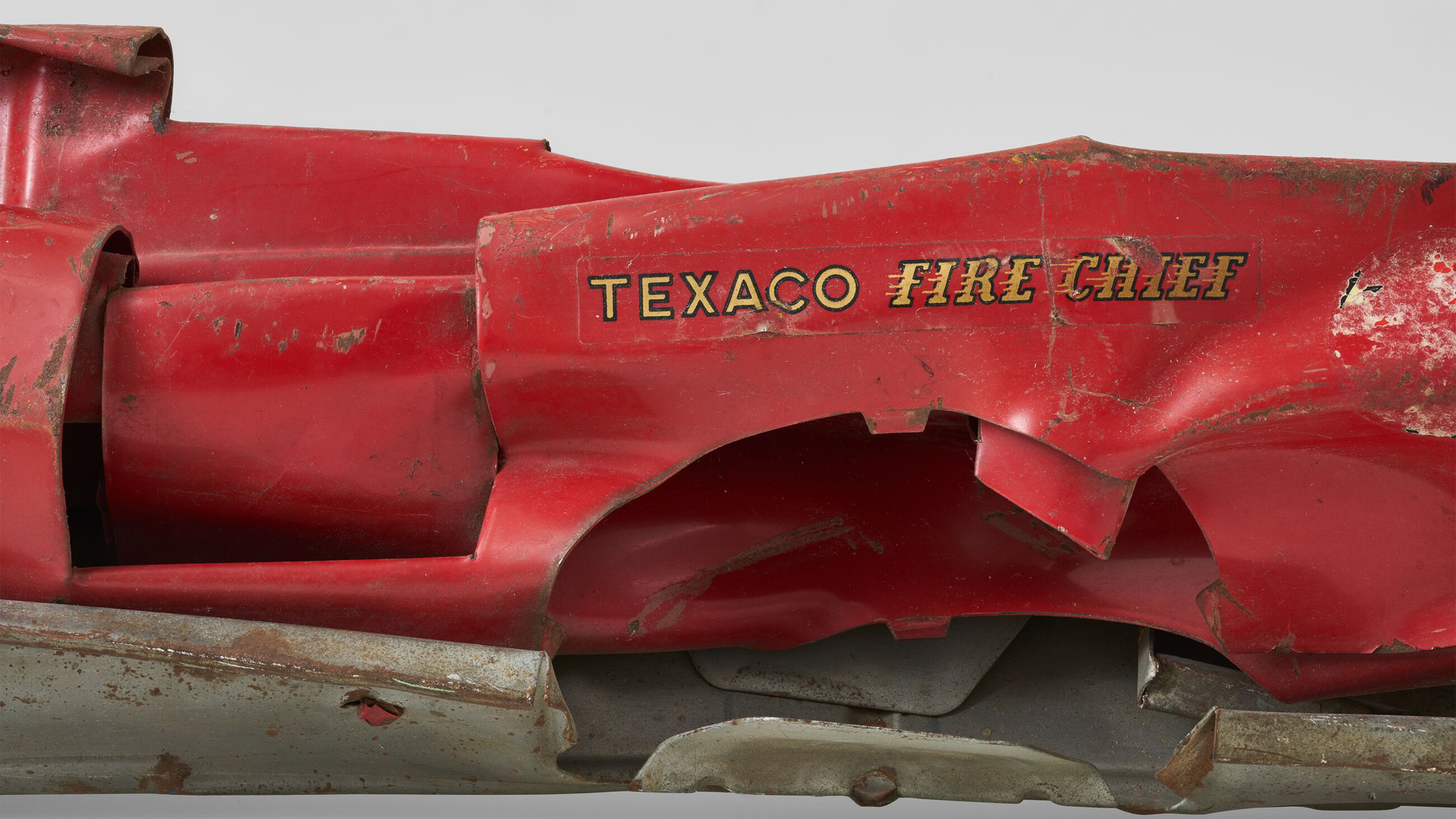
By the end of 1984, and in direct contrast to the large scale of the Gondolas, the artist accumulated what he called a ‘Tonka Toy junkyard’ from which he made some of his smallest works. Many of the Tonks, however, share a focus on low, horizontal form with the Gondolas. Seeing these works together demonstrates Chamberlain’s ability to work in a variety of scale—simultaneously creating some of his largest and smallest works. The opportunity to see the Tonks and Gondolas in parallel gives a unique insight into Chamberlain’s Sarasota era, a key period in the artist’s oeuvre.
Organized in close collaboration with the John Chamberlain Estate, the exhibition is curated by Tanya Barson.
Also on view in Monaco: NAUGHTYNIGHTCAP
Alongside the artist’s exhibition, a monumental public sculpture by John Chamberlain, ‘NAUGHTYNIGHTCAP’ (2008), is installed in the gardens adjacent to our Monaco gallery.
John Chamberlain, NAUGHTYNIGHTCAP (2008), Hauser & Wirth Monaco, 2023 © 2023 Fairweather & Fairweather LTD / Artists Rights Society (ARS), New York. Photo: Nicolas Brasseur
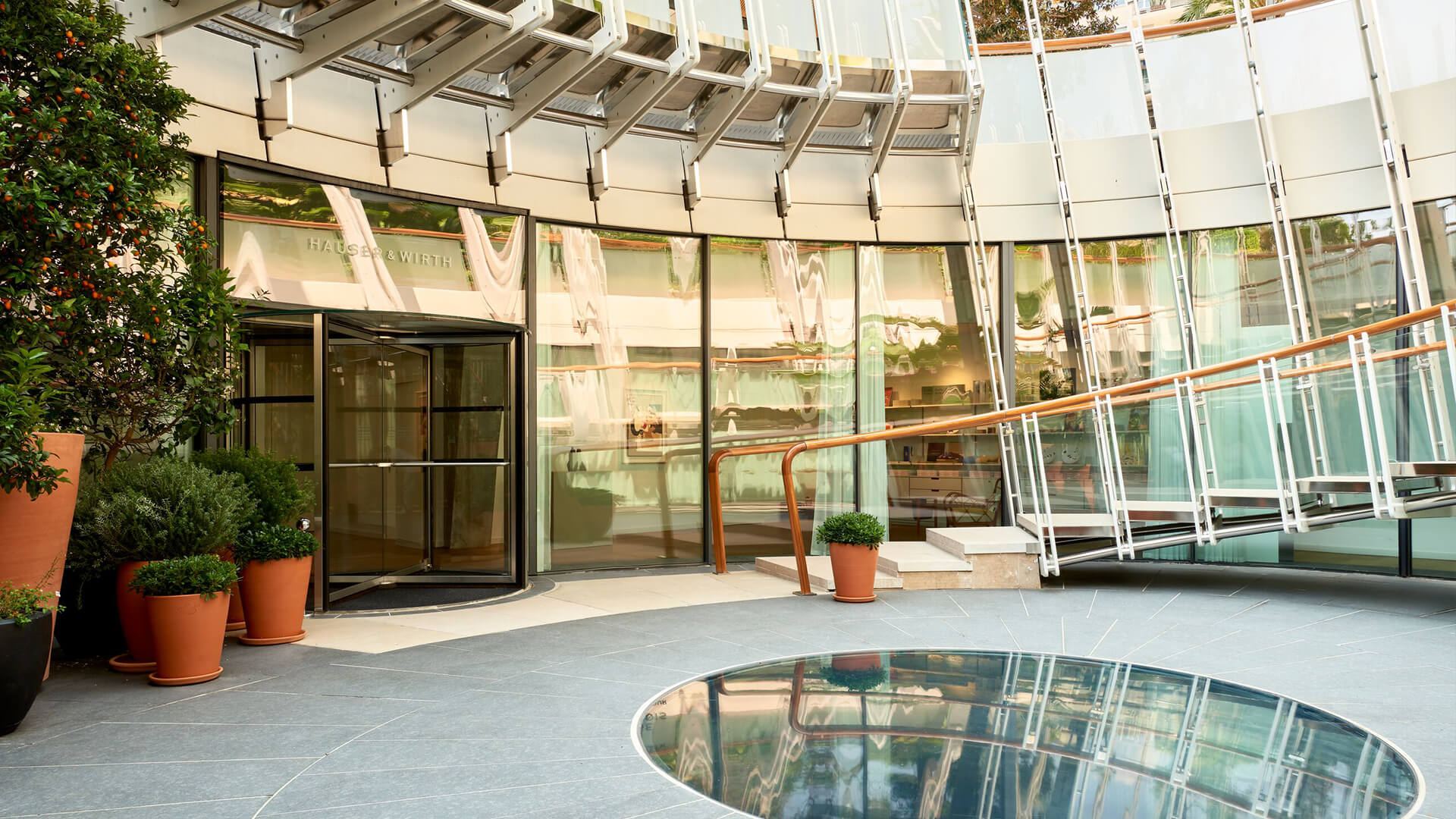
On view in Monaco
The gallery is open Tue – Sat, 10 am – 6 pm
Please visit our location page to plan your visit
All artwork images © 2023 Fairweather & Fairweather LTD / Artists Rights Society (ARS), New York
About the Artist
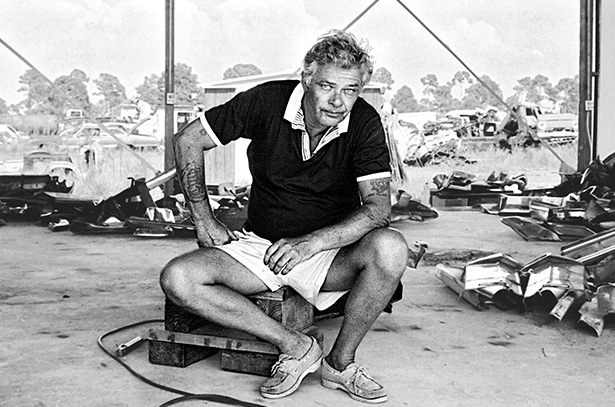
John Chamberlain
John Chamberlain (1927 – 2011) was a quintessentially American artist, channeling the innovative power of the postwar years into a relentlessly inventive practice spanning six decades. He first achieved renown for sculptures made in the late 1950s through 1960s from automobile parts—these were path-breaking works that effectively transformed the gestural...
Inquire about available works by John Chamberlain
On view now through 2 September 2023 at Hauser & Wirth Monaco.
Current Exhibitions
1 / 8

